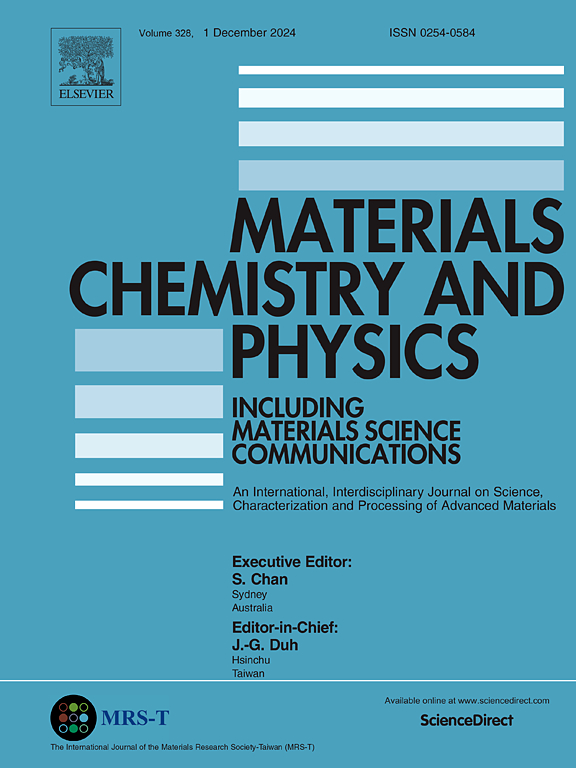XANES-EXAFS光谱用于识别和检索不同单金属原子结构的原子和配位态
IF 4.3
3区 材料科学
Q2 MATERIALS SCIENCE, MULTIDISCIPLINARY
引用次数: 0
摘要
由于单金属原子电催化剂在纳米材料背景下对广谱电化学能量转换的突出成就,迫切需要进一步推进x射线吸收光谱测定识别和分析工具,以确定广泛的单金属原子材料的配位结构。该范围包括孤立/相关的单金属原子,单金属原子合金,双金属单原子,单原子二聚体,纳米单原子和界面单原子异质结构。XANES-EXAFS光谱通过FT-EXAFS光谱和WT-contour-EXAFS拟合的组合包阐明了中心金属的精确电子和几何结构。XANES-EXAFS光谱对电子和原子结构的测定也说明了同步加速器x射线光谱技术在分类不同类型的单金属原子电极材料的电化学活性模式方面的意义。本文讨论了中心金属原子周围不同配位结构/环境(包括孤立/相关单金属原子、单金属原子合金、双金属单原子、单原子二聚体、纳米单原子、界面单原子异质结构)对EXAFS光谱峰性质的影响,以及上述单原子材料的电化学性能趋势与中心金属原子配位环境的关系。最后,讨论了XANES-EXAFS光谱的能力,用于区分大范围单原子系统的配位和电子环境,包括与其配位结构相关的生动的电化学特征,以应对未来的重大挑战。此外,在深刻地讨论广泛的单金属原子系统的独特特征的同时,最大的原子利用率,增强的原子密度,纳米约束效应与XANES-EXAFS光谱特征相关联,为未来的方向铺平了道路。许多综述文章都集中在原子分散的单原子及其衍生物(如单原子二聚体,单原子合金等)的工程上,但数据提取方法,分析协议和揭示电子结构仍然没有解决。本文综述了XAS和XAFS技术的原理,它们是鉴别原子分散单原子的核心技术。本文为读者提供了软、硬x射线技术的基础知识,并为材料设计提供了有效的依据。这也提供了对核壳电子跃迁的简要描述,这对于识别电子态以及金属活性中心的配位环境非常重要。本文章由计算机程序翻译,如有差异,请以英文原文为准。
XANES-EXAFS spectroscopy for discerning and retrieval of atomic and coordination states of a diverse single-metal-atomic structures
Due to the outstanding accomplishments of single-metal-atom electrocatalysts in the context of nanomaterials for a broad spectrum of electrochemical energy conversions, there is a pressing need to further advance the X-ray absorption spectroscopic determination discerning and analysing tool for the purpose of confirming the coordination structure of a wide-range of single-metal-atomic materials. This range includes isolated/correlated single-metal-atom, single-metal-atom alloy, dual-metal single-atom, single-atom dimer, nano-single-atom, and interfacial single-atomic heterostructures. XANES-EXAFS spectra elucidate the exact electronic and geometric configuration of central metal by a combined package of FT-EXAFS spectra and WT-contour-EXAFS fitting. XANES-EXAFS spectroscopic determination of electronic and atomic structure also illustrates the significance of synchrotron X-ray spectroscopic techniques in classifying the electrochemical activity patterns of varied types of single-metal-atom electrode materials. This article addresses a range of questions such as: nature of EXAFS spectral peaks linked to varied coordination structure/environment around central metal-atoms including isolated/correlated single-metal-atom, single-metal-atom alloy, dual-metal single-atom, single-atom dimer, nano-single-atom, interfacial single-atomic heterostructuresand link between electrochemical performance trend and discerning coordination environment of central metal-atom of above single-atomic materials. Finally, the capability of XANES-EXAFS spectra is addressed for distinguishing the coordination and electronic environment of a wide-range single-atom systems including vivid electrochemical features linked to their coordination structure to take on future grand challenges. Moreover, while insightfully discussing distinct features of a broad range of single-metal-atom systems, maximum atom utilization, enhanced density of atoms, nano-confinement effects were linked with XANES-EXAFS spectral features which pave the way for future directions. Many review articles have focused on the engineering of atomically dispersed single atoms and their derivatives (such as single-atom-dimer, single-atom-alloy, etc) but methods of data extraction, their analysis protocols and revealing electronic structures are still unaddressed. In this review article we have elucidated principles of XAS and XAFS techniques, which are the core in identifying atomically dispersed single atoms. This article provides a base knowledge to the readers about soft and hard X-ray techniques, and which can be effective based on the material designing. This also provides a brief description of core shell electronic transitions which are very crucial in identifying the electronic states as well as coordination environments across the metal active center.
求助全文
通过发布文献求助,成功后即可免费获取论文全文。
去求助
来源期刊

Materials Chemistry and Physics
工程技术-材料科学:综合
CiteScore
8.70
自引率
4.30%
发文量
1515
审稿时长
69 days
期刊介绍:
Materials Chemistry and Physics is devoted to short communications, full-length research papers and feature articles on interrelationships among structure, properties, processing and performance of materials. The Editors welcome manuscripts on thin films, surface and interface science, materials degradation and reliability, metallurgy, semiconductors and optoelectronic materials, fine ceramics, magnetics, superconductors, specialty polymers, nano-materials and composite materials.
 求助内容:
求助内容: 应助结果提醒方式:
应助结果提醒方式:


